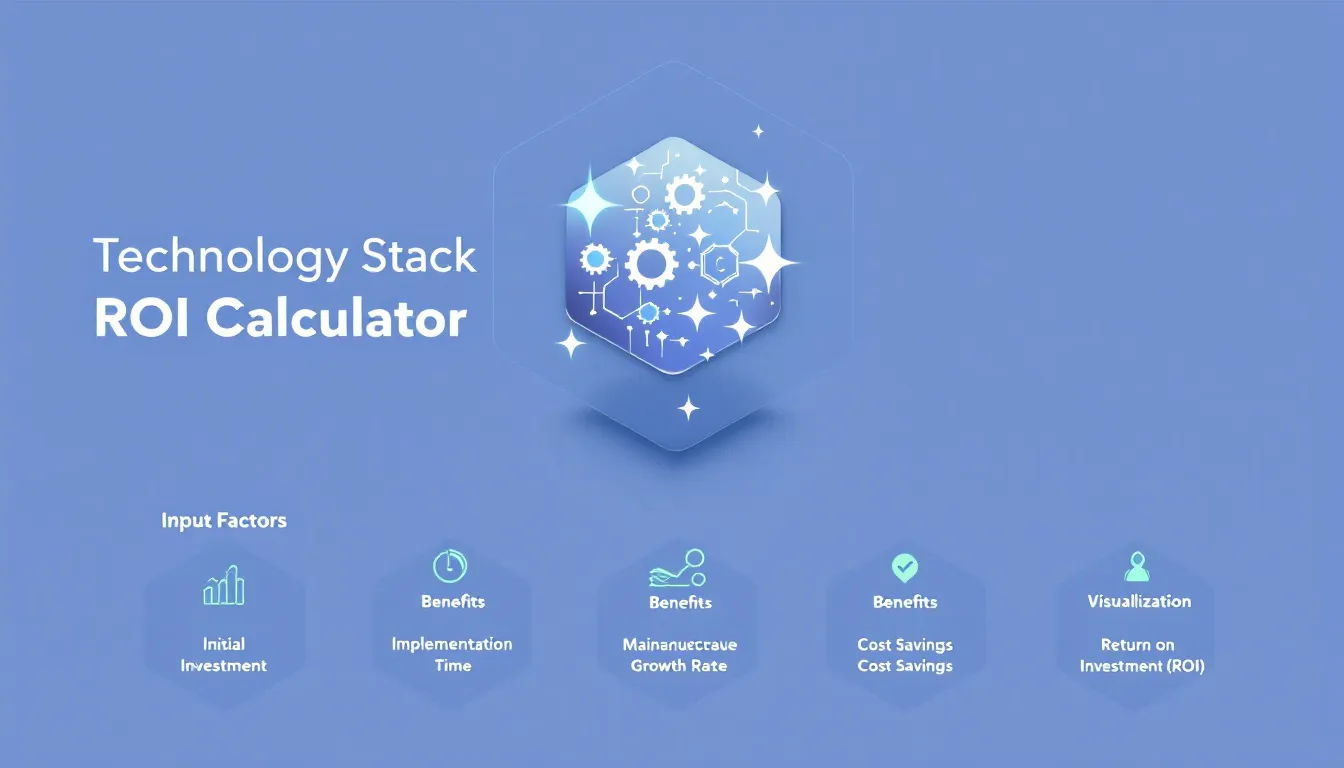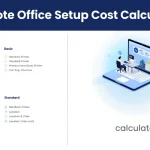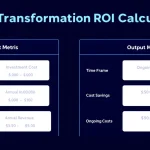Technology Stack ROI Calculator
Is this tool helpful?
How to Use the Technology Stack ROI Calculator Effectively
The Technology Stack ROI Calculator helps you evaluate the financial impact of your technology investments. To get accurate and meaningful results, follow these steps carefully:
- Select Your Currency: Choose your preferred currency—USD, EUR, or GBP—for all monetary inputs and results. For example, select EUR if your business operates primarily in Europe.
- Enter Initial Investment Cost: Provide the upfront cost to implement the technology. For instance, enter €180,000 for a new SaaS platform or £90,000 for a custom mobile app development.
- Specify Ongoing Costs Per Year: Include recurring expenses such as service fees or maintenance. Examples: £25,000 annually for cloud hosting or €12,000 yearly for software licenses.
- Estimate Revenue Increases Per Year: Project additional income gained from the new technology. Sample input: €75,000 from improved customer acquisition or £40,000 due to faster service delivery.
- Calculate Cost Savings Per Year: Enter expected savings from efficiency improvements or reduced operational costs. For example, £30,000 saved through automation or €20,000 from decreased downtime.
- Set the Time Period (Years): Input the number of years over which you want to forecast your returns. Typical periods include 4 or 7 years, depending on your business cycle.
- Input Discount Rate (Optional): To adjust for the time value of money, enter the annual discount rate. Common inputs are 4% or 8%, but consult your finance team for an exact figure.
- Calculate ROI: Click the “Calculate ROI” button. The calculator will display a detailed breakdown including Total Gains, Total Costs, Net Profit, ROI Percentage, Payback Period, and Net Present Value (NPV).
- Review and Analyze Results: Examine the numeric outputs and visual charts to understand your investment’s financial performance over time.
What Is the Technology Stack ROI Calculator? Definition, Purpose, and Benefits
The Technology Stack ROI Calculator is a smart financial tool that helps you quantify the returns you can expect from your software and infrastructure investments. It simplifies complex financial projections into clear, actionable insights so you can make well-informed technology decisions.
Definition of Technology Stack ROI
Return on Investment (ROI) for technology stacks measures how much financial gain you make relative to the costs spent on implementing and maintaining technology over a defined period. The formula is:
$$ ROI (\%) = \frac{\text{Net Profit}}{\text{Total Costs}} \times 100 $$Where:
- Net Profit is Total Gains (revenue increases plus cost savings) minus Total Costs (initial investment plus ongoing expenses).
- Total Costs includes all upfront and annual expenses related to the technology.
Purpose of the Calculator
This calculator helps you:
- Make data-driven decisions about adopting or upgrading technology.
- Compare different technology investments side-by-side.
- Justify IT budgets with clear financial projections.
- Forecast long-term returns and payback periods.
- Understand the financial risk and potential reward before committing resources.
Key Benefits of Using the Calculator
- Full Financial Overview: You get a comprehensive analysis covering all costs and benefits across the investment period.
- Time Value of Money: The optional discount rate helps you calculate Net Present Value (NPV), giving a more realistic picture of money’s changing worth.
- Visual Insights: Interactive charts display cumulative net profits and ROI trends, making it easier to grasp financial outcomes.
- Customizable Inputs: Adjust multiple parameters to create various scenarios and pick the best technology option.
- Risk Evaluation: By forecasting outcomes, you can better assess potential pitfalls and take preventive actions.
Example Calculations Using the Technology Stack ROI Calculator
Here’s how the calculator works with real numbers. Let’s say a company is planning to invest in a new customer relationship management (CRM) software.
- Initial Investment: $220,000
- Annual Ongoing Costs: $35,000
- Expected Annual Revenue Increase: $95,000
- Annual Cost Savings: $45,000
- Projection Time Period: 6 years
- Discount Rate: 6%
Based on these inputs, the calculator estimates:
- Total Gains: $840,000 (sum of revenue increases and cost savings over 6 years)
- Total Costs: $430,000 (initial investment plus ongoing costs over 6 years)
- Net Profit: $410,000
- ROI: 95.35%
- Payback Period: Approximately 3.8 years
- Net Present Value (NPV): $294,150 (adjusted for 6% discount rate)
This detailed breakdown helps you understand when your investment will start paying off and how profitable it will be over the forecast period.
Practical Uses and Applications of the Technology Stack ROI Calculator
1. ERP System Deployments
Use the calculator to assess the financial return of implementing an Enterprise Resource Planning system. Factor in licensing, training, and expected efficiency gains to find out if the investment makes sense.
2. Cloud Migration Projects
Compare the costs and benefits of moving from on-premises servers to cloud services. The calculator helps you quantify savings on maintenance and scalability improvements.
3. Cybersecurity Investments
Estimate the value of protecting your IT environment against breaches by calculating potential cost savings from reduced downtime and avoided security incidents.
4. Digital Transformation Initiatives
Break down complex digital transformation efforts into smaller investments and analyze their individual ROI, making it easier to prioritize projects.
5. Software Development Projects
Evaluate the financial impact of developing new software features or custom applications, helping you decide which projects deliver the highest returns.
Important Disclaimer
The calculations, results, and content provided by our tools are not guaranteed to be accurate, complete, or reliable. Users are responsible for verifying and interpreting the results. Our content and tools may contain errors, biases, or inconsistencies. Do not enter personal data, sensitive information, or personally identifiable information in our web forms or tools. Such data entry violates our terms of service and may result in unauthorized disclosure to third parties. We reserve the right to save inputs and outputs from our tools for the purposes of error debugging, bias identification, and performance improvement. External companies providing AI models used in our tools may also save and process data in accordance with their own policies. By using our tools, you consent to this data collection and processing. We reserve the right to limit the usage of our tools based on current usability factors.







